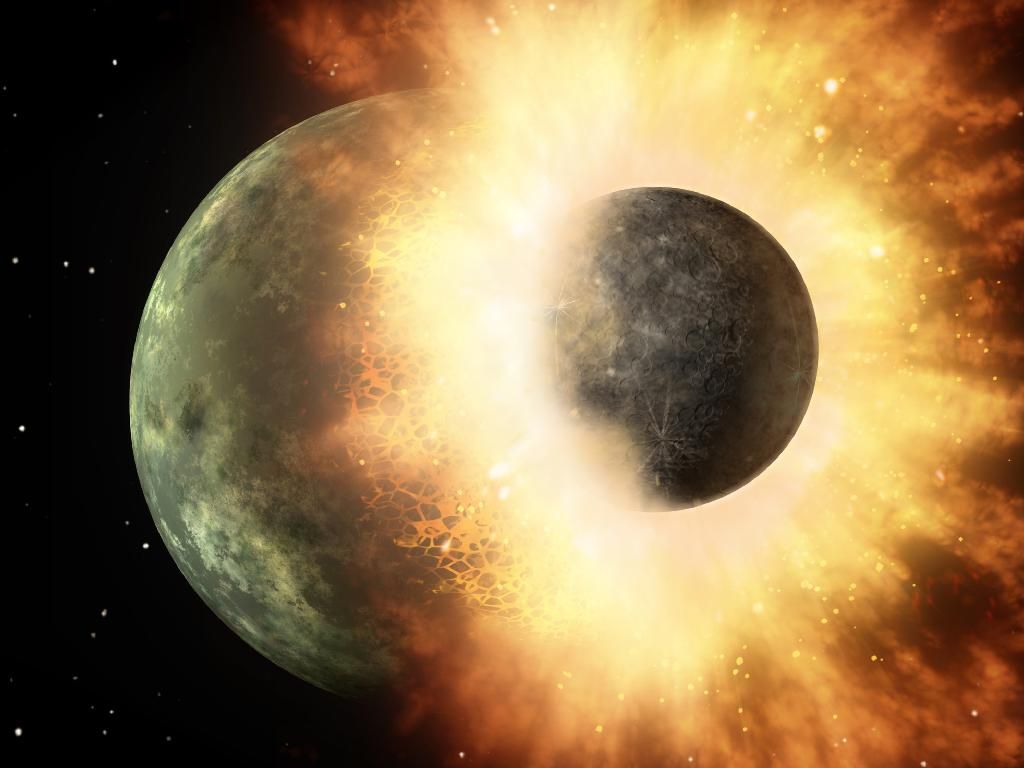
Astronomers have long suspected that the Moon, despite its serene appearance, was born during a giant collision Earth experienced early in life. But they weren't sure just how big a hunk of rock, which scientists call Theia, would be needed to produce the Moon as we see it today. A new study published in the journal Geophysical Research Letters tries to solve that puzzle. The report suggests the collision must have been with something about the size of Mars or smaller.
That's smaller than the size scientists had been hypothesizing under this theory. Previously they had thought Mars would be a minimum size, not a maximum.
But there has always been a hole in the idea. The Earth and Moon, as staggeringly different as they are, have identical chemical fingerprints denoting the flavors of elements found within each. Scientists didn't know how to explain that under the giant impact theory. A second theory—that the Earth and Moon were both formed when two smaller identical objects merged and then separated—tried to skirt that problem.
In the new paper, scientists revisited the fingerprint problem with a high-tech computer program that tested two million different simulations of a giant impact. Each of those simulations used a slightly different set of parameters, tweaking variables such as the size of Theia. Then, they checked each simulation's results against what Earth's innards actually look like.
In all the simulations where Theia was at least 15 percent of Earth's current size, the results came out all wrong. If that was what the collision had looked like, Earth's molten mantle layer would contain much more of the elements nickel and cobalt than it actually does.
That means that scientists can finally rule out those larger guesses at Theia's size, capping it at between 10 and 15 percent of Earth's current mass, or about the size of Mars today. Theia simulations within that range sometimes work, depending on other characteristics of the collision, but the smaller the impactor, the better chance the simulations had of matching what Earth really looks like.
And the scientists add that there could be a tiny legacy of Earth before Theia's visit buried deep under the planet's surface. If that's the case, they say, finding that "primordial geochemical signature" could tell us more about what Earth looked like when it was first born.
Uncommon Knowledge
Newsweek is committed to challenging conventional wisdom and finding connections in the search for common ground.
Newsweek is committed to challenging conventional wisdom and finding connections in the search for common ground.
About the writer
Meghan Bartels is a science journalist based in New York City who covers the science happening on the surface of ... Read more





